Around The World In 45 Dishes: A Culinary Journey Of Traditional Foods From Across The Globe
Ever heard of that age-old saying that claims that the way to a man’s heart is through his stomach? Have you ever wondered if that would hold true across borders? We typically get to appreciate the food of a particular county long before we’ve seen the sites. Thus, it’s unsurprising that traditional dishes contribute immensely to our initial impression of a place.
Thanks to globalization, we can now sample different types of cuisine from around the world without leaving our home country. Famous traditional meals like Italian pasta dishes, as well as Indian cuisine, are no longer only consumed and prepared in their nation of origin. You can have these and others right in your city or one nearby!
If not, the next best thing is to know about them in preparation for your next trip, and that’s where we come in. So, here are 45 delicious traditional foods from all over the world!
Gambas al Ajillo – Spain
Around the 16th century came the traditional Spanish meal known as “Garlic Prawns,” or Gambas al Ajillo. It comprises shrimp that have been sautéed in a skillet using olive oil, minced garlic, lemon juice, and paprika. For this, bigger jumbo prawns or shrimp are preferred.
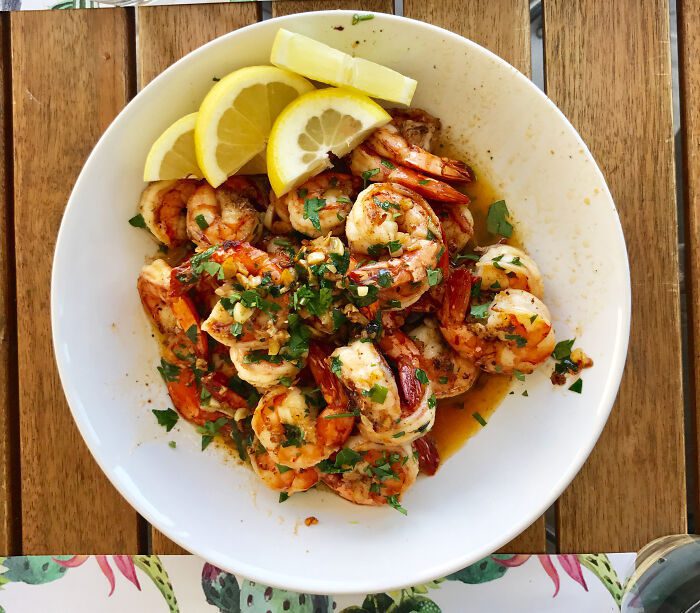
It is a well-liked tapa, or appetizer, offered in pubs and eateries all around Spain. This dish is usually served with chopped parsley sprinkled on top and crunchy bread on the side in order to absorb the flavorful sauce. Looks so scrumptious!
Yaki Udon – Japan
The popular Japanese stir-fry dish, yaki udon, is frequently offered as a late-night meal or nibbled on in izakaya (casual bars) throughout Japan. It’s made using thick udon noodles, a salty soy and mirin sauce, veggies, and a protein of your choosing.
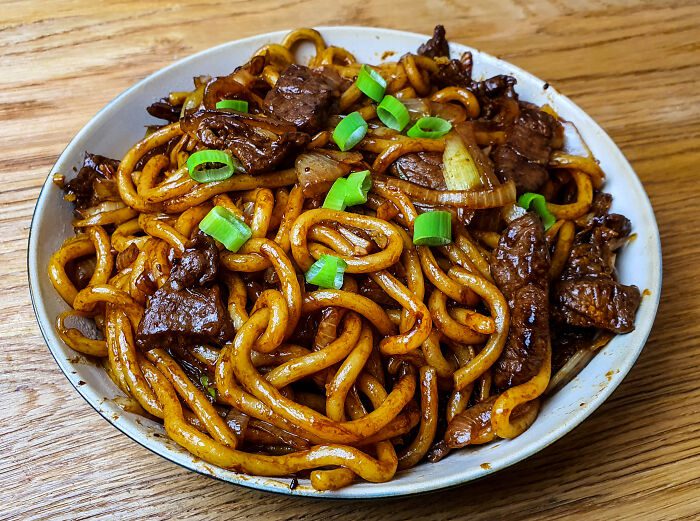
According to the generally accepted origin myth for yaki udon, during the post-World War II era, there was food scarcity in Japan, and the noodle business could not obtain its usual yakisoba noodles. So, chewy udon noodles were used in their place. Shortly after that, an entirely different meal emerged!
Raclette – Switzerland
This is a somewhat firm mountain cheese that melts when placed under a heating source for a short time. It is the main component of the raclette experience. To make it, you need a raclette grill, which is a tabletop grill that functions much like a tiny broiler.

Individual raclette pans are set alongside the raclette grill to ensure everyone can melt their individual raclette slices according to their preference. This meal has become well-known throughout the Swiss Alps, particularly in the ski town of Valais and other regions of the Swiss Alps.
Miso Ramen – Japan
This soup is called miso ramen because miso, chicken stock, veggies, and ground pork are used to make the broth. The end result is ramen soup that’s very rich in flavor and thick. The ideal noodles for this meal are springy, chewy, and yellow.
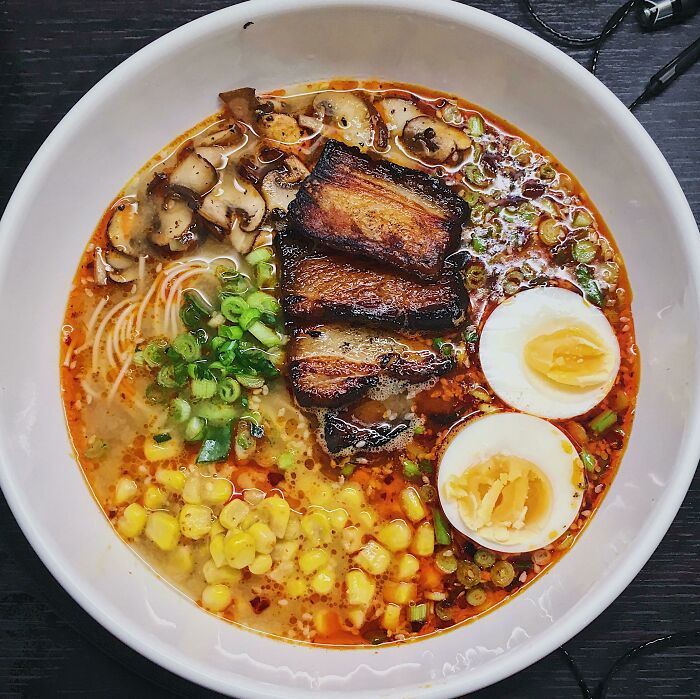
Also, they must be freshly made. Chashu, menma, corn, veggies, and butter are all acceptable toppings with miso. It’s a cozy food that’s a standout choice for colder conditions because it combines saltiness and creaminess. So, if you like trying out new soup recipes, there you have it.
Gnocchi alla Sorrentina – Italy
The name of this dish comes from Campania, notably the charming seaside town of Sorrento. Strangulaprievete alla Sorrentina (another name for gnocchi alla Sorrentina) are dainty, little potato cushions covered in a tomato and mozzarella sauce that tastes like basil.
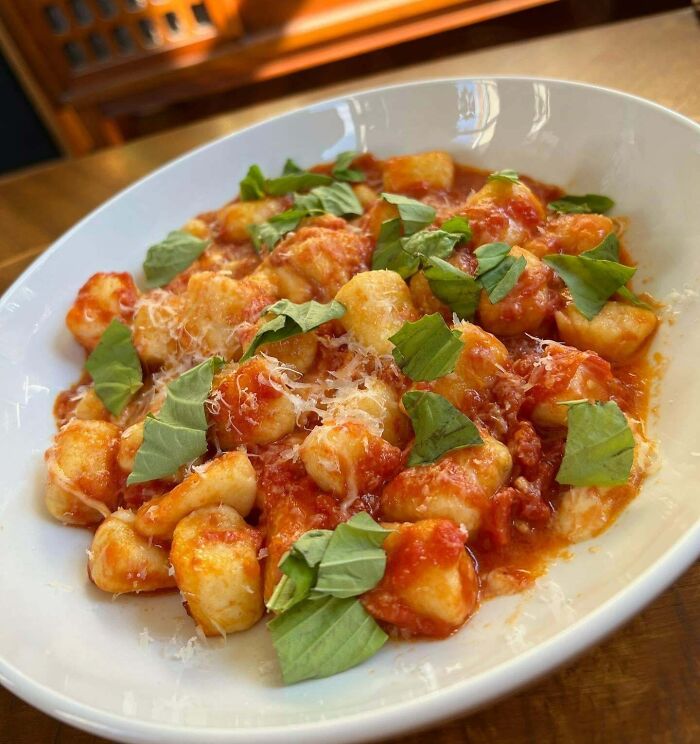
Then mozzarella, pecorino, and sometimes parmesan are added. After that, they are baked till the cheese boils and streams or the exterior develops a golden crisp. Gnocchi alla Sorrentina is frequently made in a small clay pot known as a pignatiello and served hot.
Gyoza – Japan
The famed Japanese gyoza, which resembles a crescent, descends from traditional Chinese jiaozi dumplings. After the instructions and mode of preparation were extensively altered to accommodate the Japanese palate, gyoza swiftly shot to the very forefront of the list of beloved Japanese meals.
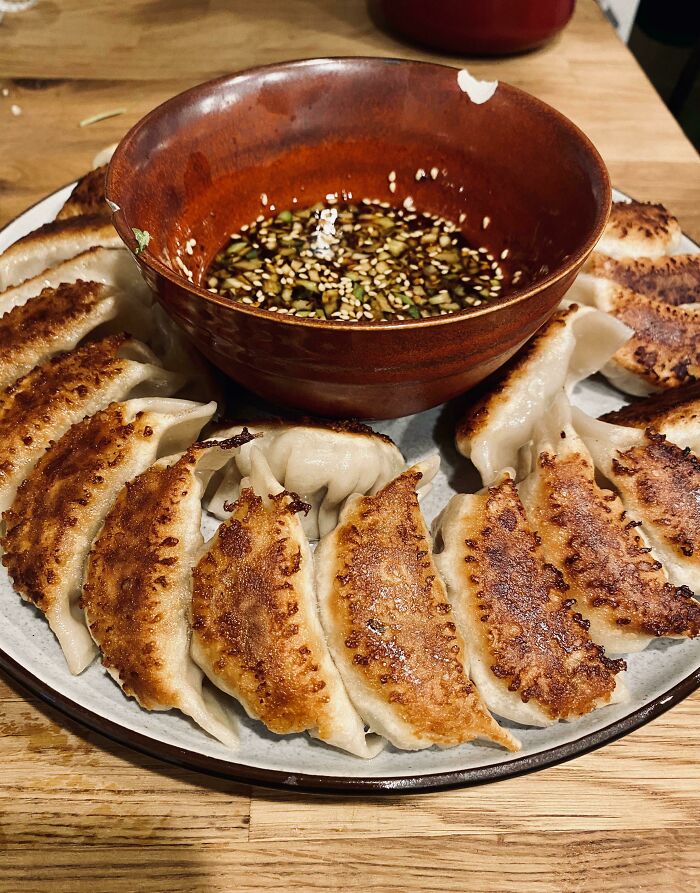
They consist of a thin, meat and vegetable-filled wrapper made of eggs, wheat, and water. Although regional variations exist, the most common stuffing ingredients are minced pork or chicken, cabbage, chives, and a significant quantity of garlic, ginger, as well as green onions.
Pasta Carbonara – Italy
Combine spaghetti alongside egg yolks, guanciale, plus Pecorino Romano cheese for a sizzling hot plate of delicious carbonara. It really is that simple to make. This dish is an institution in Rome and is recognized nationally. That said, its origin is, at times, obscure and disputed.
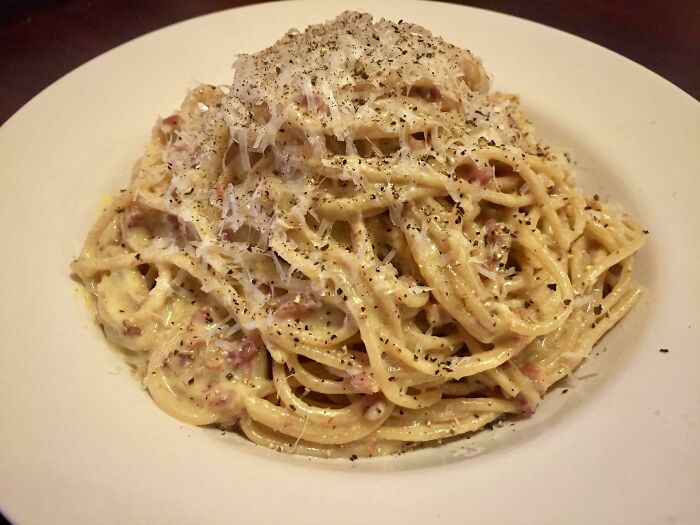
The term “carbonari” is believed to have originated with the woodcutters and charcoal makers referred to as Carbonari, who lived in Rome’s northeastern Appenine Mountains. Their pasta is said to have been cooked above a fire of hardwood charcoal before being mixed with eggs and cheese.
Khachapuri – Georgia
Georgia’s famous bread, khachapuri, is shaped like a boat. It typically has an egg cooked inside of the cheese-filled, crunchy crust. As you would guess, it takes a little expertise to make this adaptable bread, but the result is always well worth the effort.
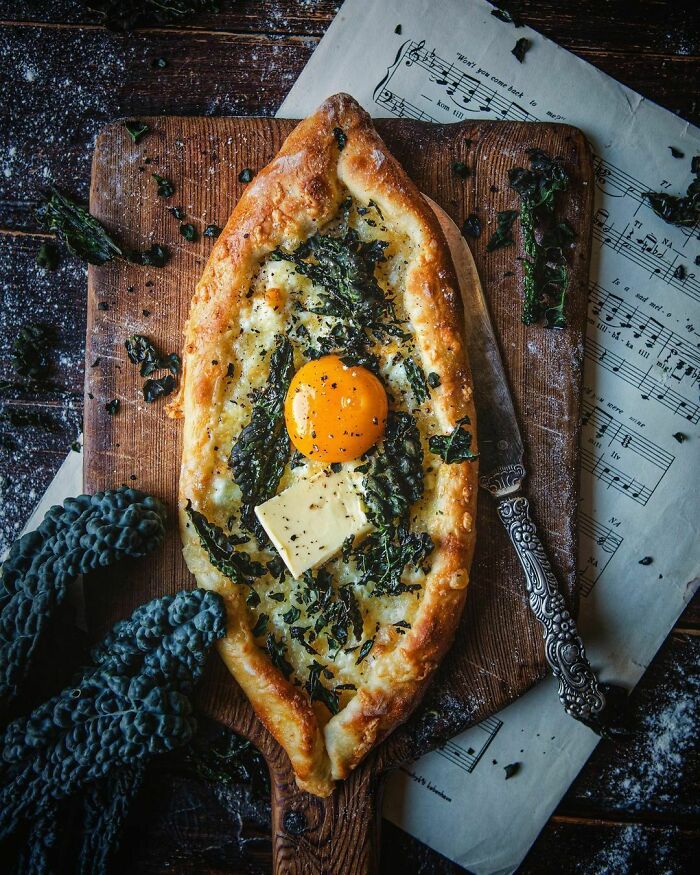
Traditional Georgian Sulguni, and Imeretian cheese, continue to be the most well-liked ingredients for this dish. That is despite the inclusion of other cheese types, including mozzarella and feta. Even without eating it, you can just tell that it’s delicious and filling too!
Ghormeh Sabzi – Iran
Ghormeh sabzi is an Iranian herb stew eaten everywhere in Iran and is considered to be the national dish of the country. Although there are numerous ways to prepare the dish, the primary components are a mix of fried herbs. This could include things like chives and cilantro.
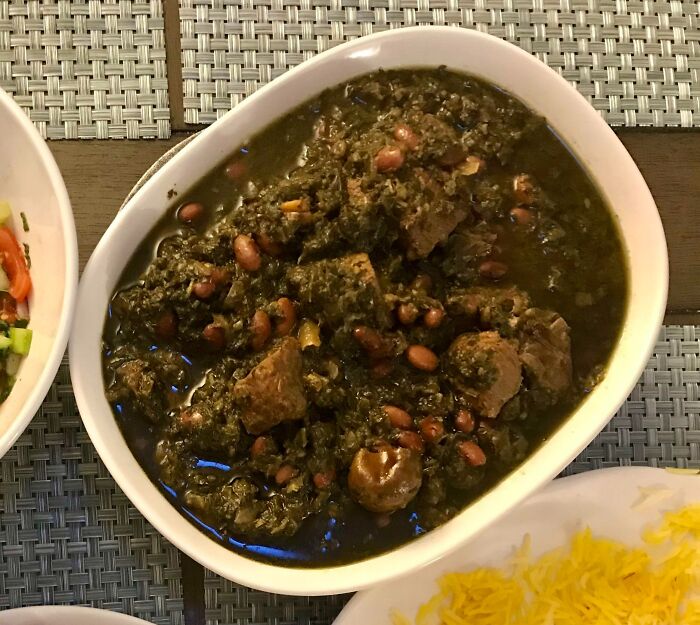
There’s no escaping green with this meal since it also occasionally included kale or spinach and other veggies like leeks. As you can see, the end result is a heavy stew that is made even more nutritious and flavorful by adding kidney beans and meat.
Souvlaki – Greece
Souvlaki is basically marinated meat that’s roasted on a stick. The meal is typically made with pork, though it is also frequently made with chicken, lamb, and beef. Souvlaki can be eaten as a kebab directly from the skewer or other options.
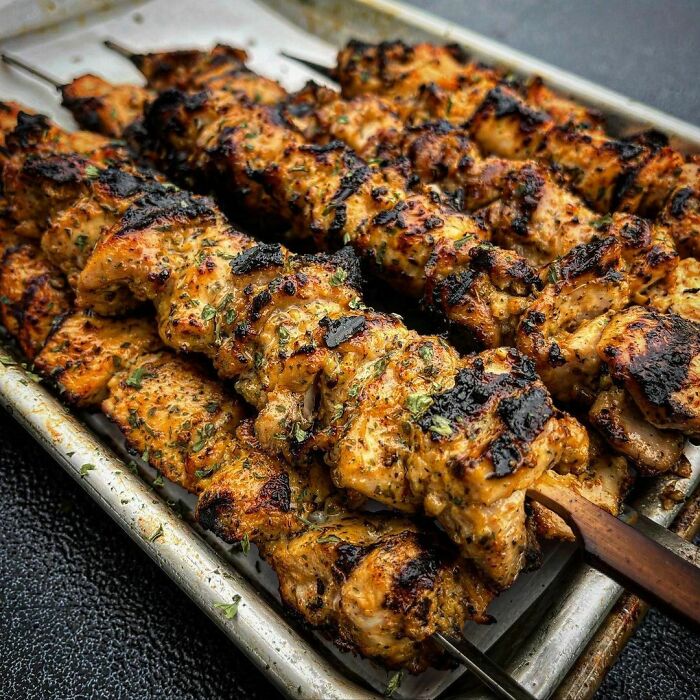
You can eat it in a toasty pita with your preferred toppings or on top of an array of fresh vegetables. It’s a well-liked fast-food item frequently available at Souvlatzidika. Gyros and other meals with similar grilled meat are regularly offered at these small eateries.
Tonkotsu Ramen – Japan
Tonkotsu ramen is typically prepared with thin, long noodles that are garnished using a variety of toppings. It typically has a rich, creamy broth made from pork bone. “Ton” is the Japanese word for pork, while “katsu” is the word for bone.
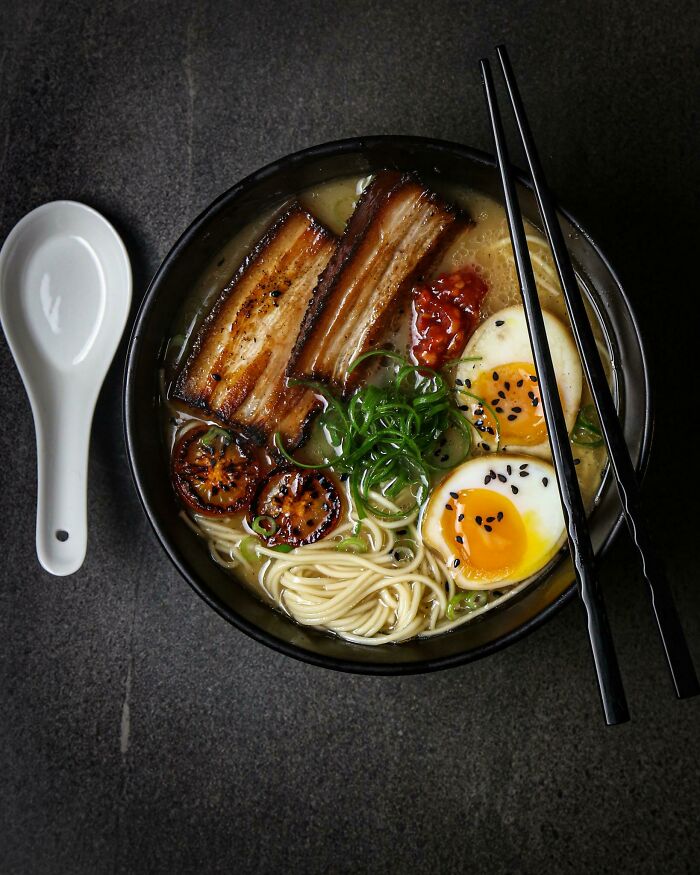
To give the collagen found in pork bones a chance to turn into gelatin, they are left to cook for hours at low temperatures. Tonkotsu ramen soup is also abundant in minerals when the marrow and lipids in the bone start to unleash all the goodness!
Gyro – Greece
Gyro is a popular Greek dish that is made using meat that’s spit-roasted. Typically, lamb, chicken, and beef are the meat options preferred. It is then served with pita bread and garnished using tzatziki sauce, tomatoes, plus onions. In Greek, the term “gyro” means “turn.”
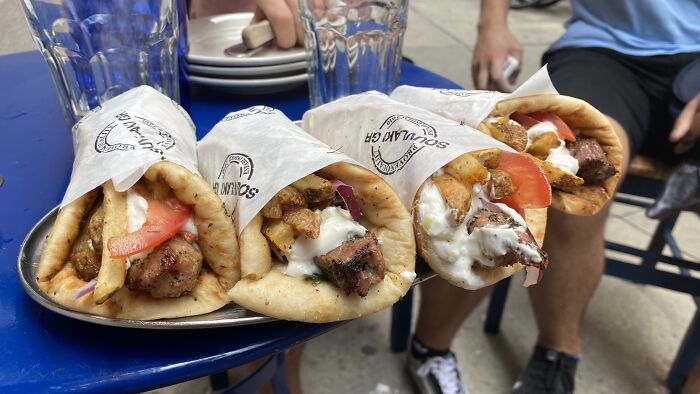
The meat used to make this dish is rotated while cooking over the spit. It is also thinly cut while it cooks to make it simple to wrap with pita bread. Gyros, like most dishes on our list, is well-liked in both their native country and other nations.
Bakaliaros – Greece
Greeks typically use the word “bakaliaros,” which also means codfish, to describe crispy, golden cod fritters. This meal is mostly eaten on the Annunciation (March 25) and later on Palm Sunday. Cod is a year-round favorite in tavernas, whether it’s salted or air-dried.
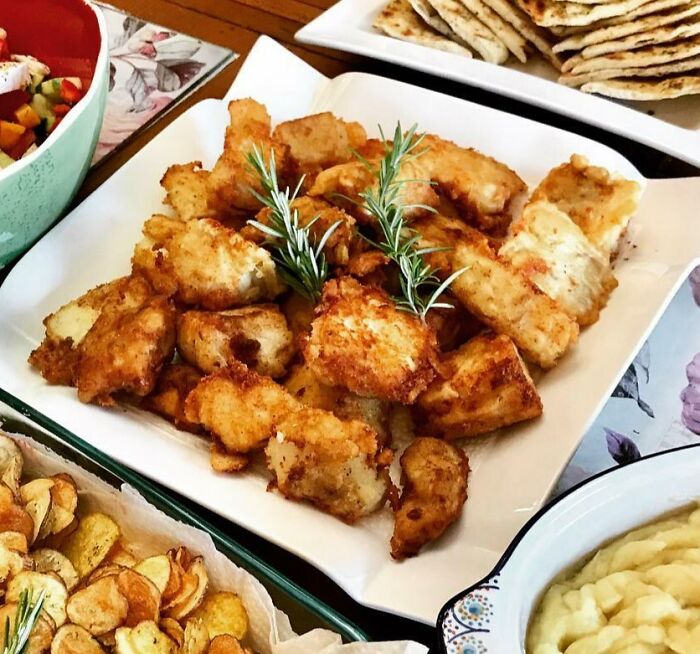
Bakaliaros a basically a traditional Greek meze dish as well as one of the best ouzo mezedes, batter-fried into crunchy small pieces (like fish sticks) and served with skordalia, a kind of potato or bread puree that has an intense garlic flavor.
Massaman Curry – Thailand
This Thai dish is rather unusual. The major flavors originate from spices generally found in Indian curries because it was inspired by both Indian and Malay cultures. Coriander, cumin, cloves, nutmeg, cinnamon, and cardamom are some of the common ingredients used in this dish.
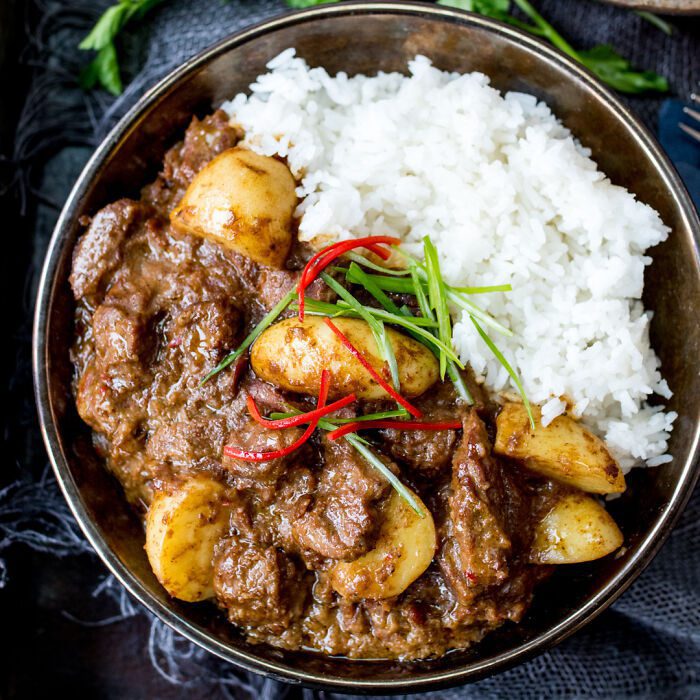
In essence, Massaman Curry is made by combining the flavors of Indian curry with those of Thai curries (garlic, lemongrass, and galangal), then adding coconut and peanuts. The end result is a flavorful dish comprising a cross between Thai and Indian curries.
Steak au Poivre – France
The primary ingredient in steak au poivre is beef steak. After it’s cooked, it’s coated with crushed peppercorns. Depending on the chef’s preferences, the peppercorns might be black, green, or even white. After that, it is fried using a pan in butter or oil.
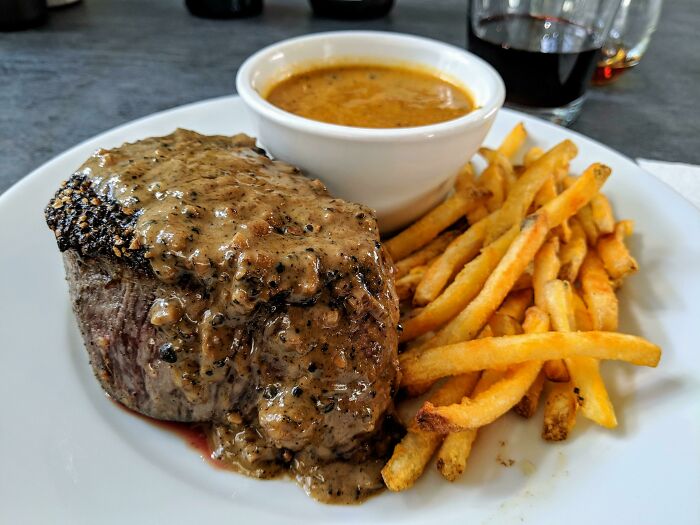
Once the steak is cooked, a sauce comprising of shallots, vermouth, as well as demi-glace is poured over it. The ideal way to prepare the steak depends on the level of doneness since you can have it rare, medium-rare, or well-done.
Cacio e Pepe – Italy
This traditional dish with Roman roots is quite straightforward yet delicious. Cacio e Pepe is a dish made of pasta (typically spaghetti), mature Pecorino Romano cheese, salt, plus a substantial amount of crushed black pepper. Making it is simple, and the components don’t go bad easily.
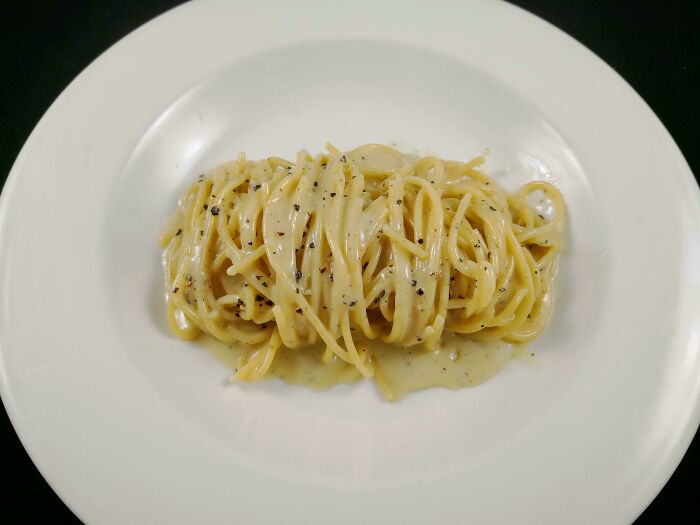
As such, this dish used to be the preferred meal of Roman shepherds. The hot pepper protected the shepherds from the effects of the frigid temperatures through the night, whereas the pasta provided them with the energy they needed to complete their strenuous tasks.
Peking Duck – China
The Yuan Dynasty throughout 13th century China marked the beginning of the long history of the Peking duck. This scrumptious dish is so adored that Beijing’s oldest Peking duck eatery, Bianyifang, has been operating since the Jiajing era around the 16th century! Can you believe that?
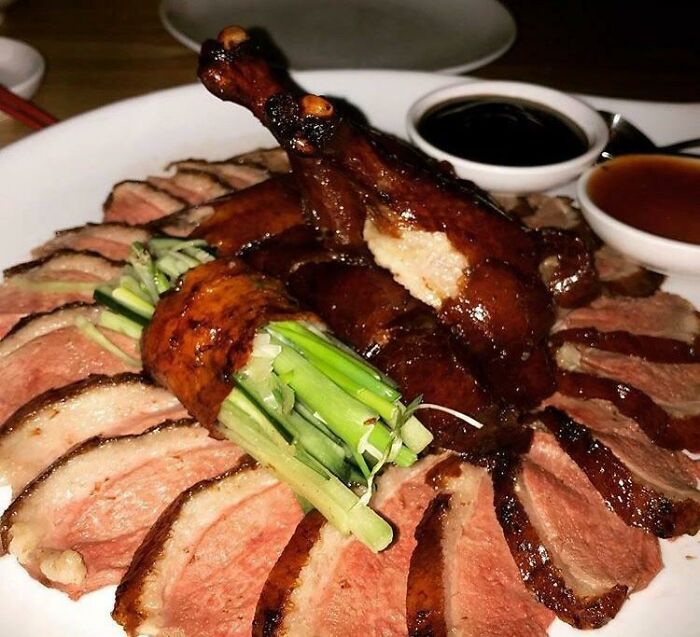
The duck is first roasted until the skin is crispy and golden, and the meat is tender, juicy, as well as somewhat sweet. The meat and skin are then simultaneously pleated into paper-thin, steam-cooked pancakes or white buns. Our mouths water just reading about it!
Ebi Furai – Japan
These large prawns are often deep-fried after getting coated in panko crumbs and an egg wash. Ebi Furai is one of the most well-known yōshoku cuisines, which are Japanese dishes with Western characteristics. These characteristics were developed during the Meiji Restoration from the 1860s through the early 1900s.
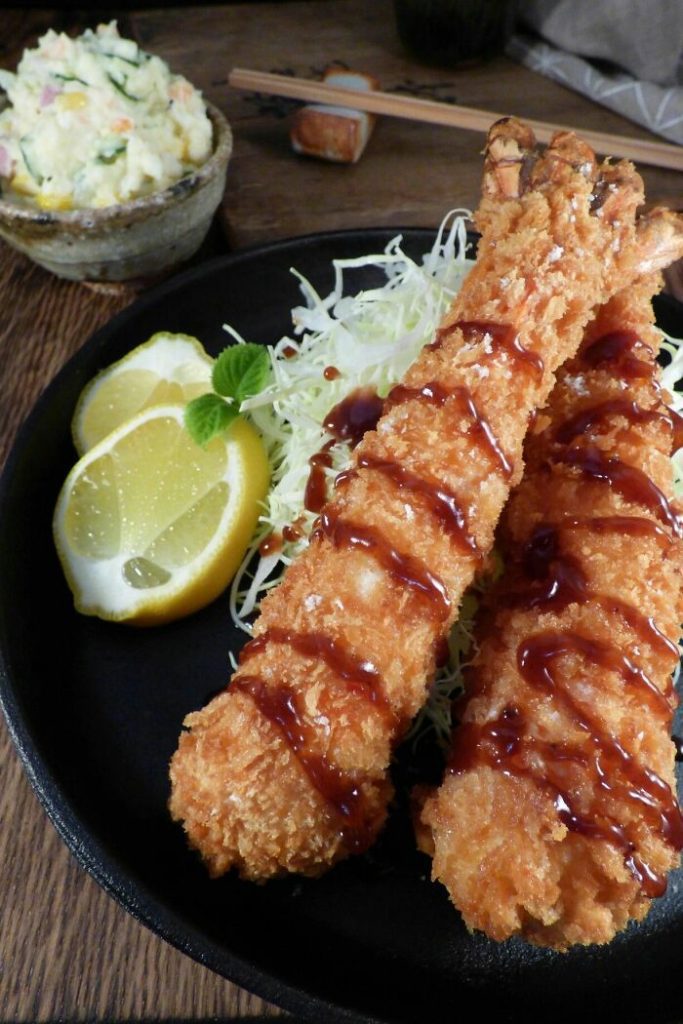
Ebi furai, one of Nagoya’s iconic dishes, is a type of kawaii-age food that is breaded and deep-fried. It is also acknowledged as meibutsu, a term used in Japanese to refer to well-known foods connected with specific geographic areas. Also, no anime is complete without ebi furai!
Tonkatsu – Japan
We previously saw Tonkotsu ramen, and now we have Tonkatsu. With this one, breaded deep-fried pork (tonkatsu) with eggs is boiled in a sweet and salty broth and served on top of rice to make the well-known Japanese delicacy known as katsudon.
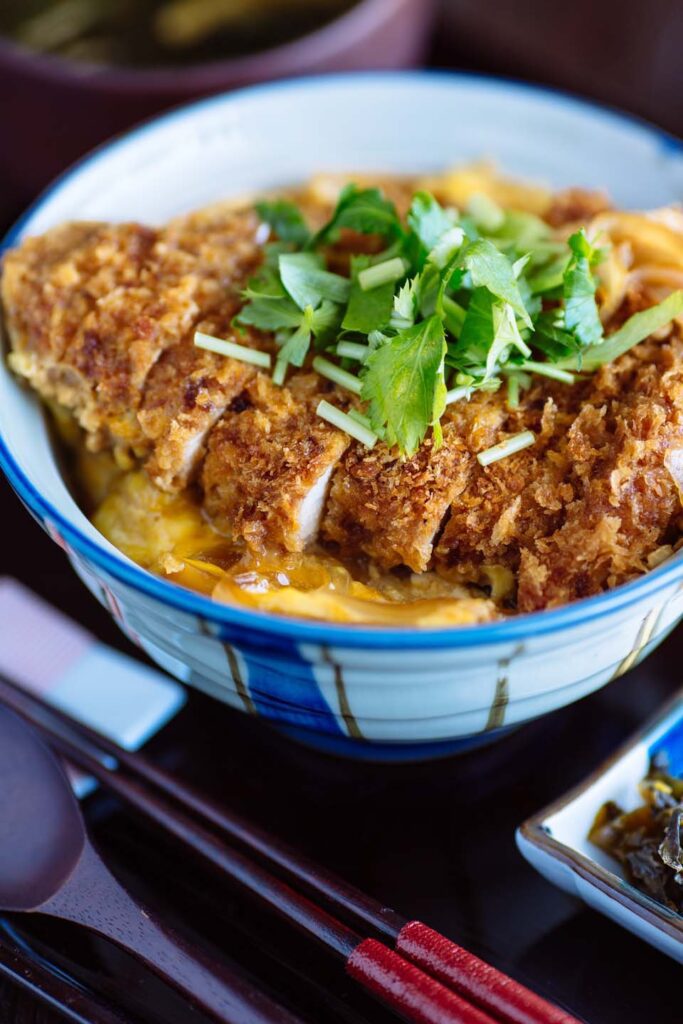
This is a bowl dish, often known as a don or donburi. Relative to other types of donburi, katsudon is heavy, but the flavor is so great that you can overlook the extra calories that come from the deep-fried tonkatsu. If you are ever in this Asian nation, ensure you taste this delicacy.
Manti – Turkey
Manti, a type of native Turkish dumpling, is made with seasoned minced beef and onions. A very common way to serve it is with yogurt and garlic sauce. The word “mantu” means “dumplings,” and these delicacies were brought to Turkey in the 13th century.
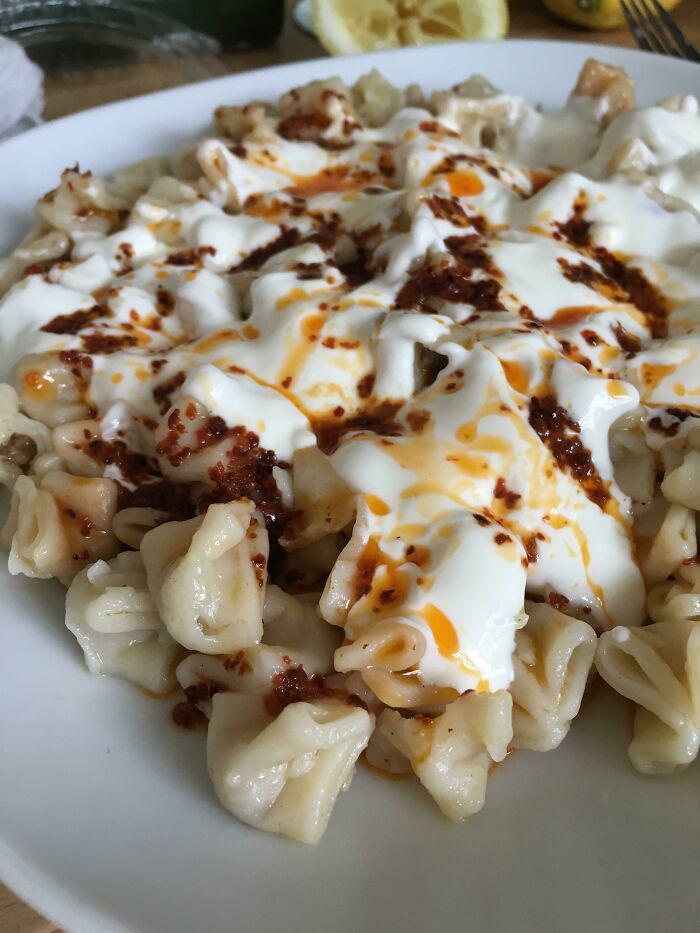
Nomadic Turkish tribes are credited with introducing this meal in the region. Nowadays, manti dumplings are popular in Turkey as well as in numerous other cuisines, like Afghan, Armenian, and Central Asian. Depending on the language, manti could be served as a solitary dumpling or several dumplings.
Karē – Japan
Arguably, one of the most well-liked foods in the Asian country of Japan is karē. It’s a type of curry with Japanese influences that started to gain popularity during the Meiji era (1868–1912). When it first emerged, karē and rice became a pricey, upscale dish.
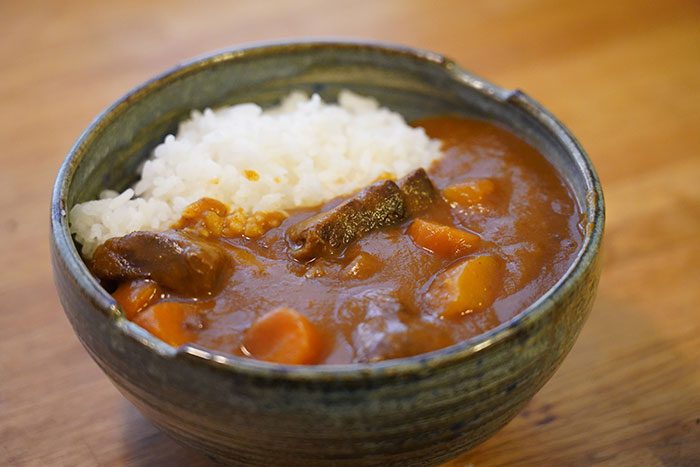
Due to the inclusion of flour or roux, karē is less hot, sweeter, darker in color, and frequently thicker than Indian curries. Additionally, in Japan, there are a total of three main varieties of karē: curry over rice (karē-raisu), curry over noodles (karē-udon), and curry-filled pastries (karē-pan).
Lasagne alla Bolognese – Italy
Bolognese was derived from the traditional lasagna recipe. Traditionally, rows of homemade fresh egg lasagna noodles were used to create this filling and delectable piatto unico ( one-dish meal). It is typically flavored with spinach, and beneath each layer, there is ragù sauce plus béchamel sauce.

At the topmost layer, Parmigiano-Reggiano cheese is sparingly dusted. It had undergone several changes over the years; for instance, it wasn’t until the Renaissance that eggs were added to the mix. Also, the Neapolitans were the first to add tomatoes to this dish.
Shahi Paneer – India
Native to the Indian subcontinent, Shahi paneer or Paneer Rajwadi is a type of chhena or paneer. Rajwadi and shahi are terms used to describe those of royal lineage, whereas Chhena and Paneer are the names for Indian cottage cheese.
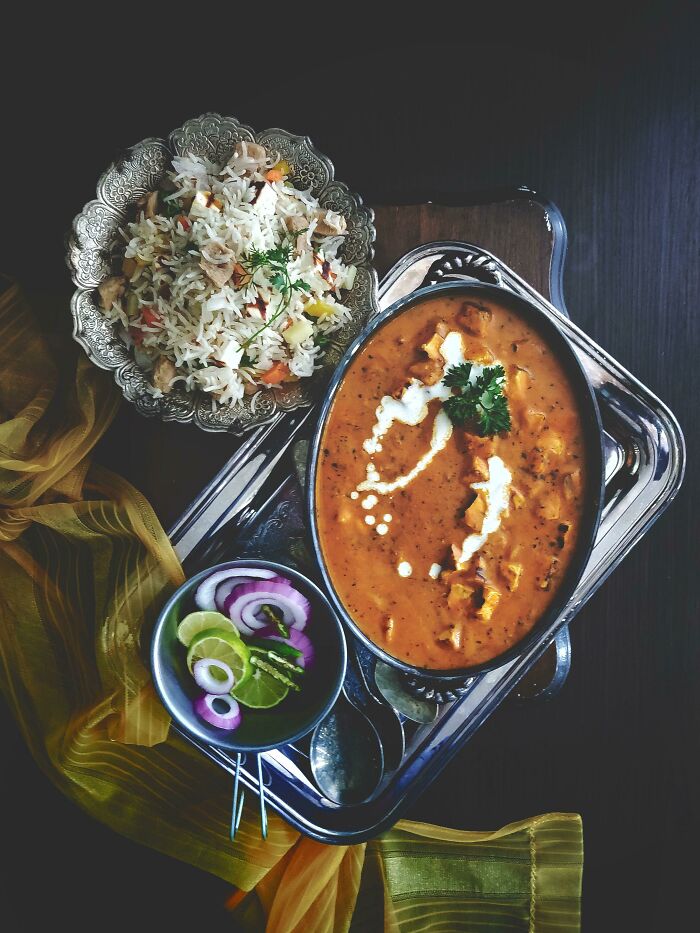
The curry is usually made by frying tomatoes, onions, crushed cashews, clarified butter, and cream. Chhena/paneer pieces with an array of spices are then added. Locals like to eat it with rice, bread, and Indian flatbreads like naan or roti.
Carnitas – Mexico
Carnitas, which translates to “little meats,” is a famous dish made from pork. A cheap, deeply marbled pig cut, like a boneless Boston butt, hog shoulder, or picnic ham, is either braised or cooked for a long time with lard and special seasonings.
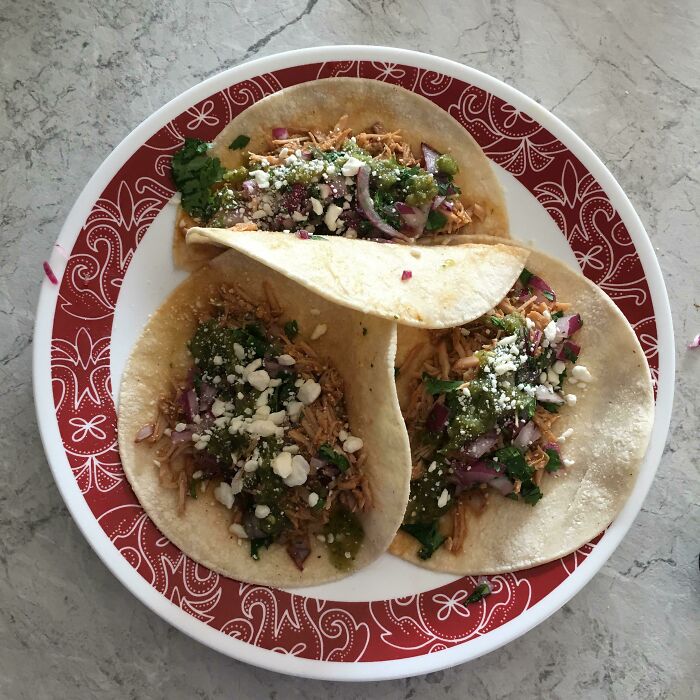
The meat is braised/cooked till it is soft enough to be shredded. It then undergoes roasting to finish cooking and achieve a crisp texture. You can eat carnitas as it is with salsa and sides or as part of a taco, burrito, or enchilada stuffing.
Char Siu Bao – China
The term Char Siu Bao comes from the Chinese word for barbecued pork, Char Siu (also known as char siew). This pork bun is typically consumed between the morning and early in the afternoon. It is usually served with Chinese tea.
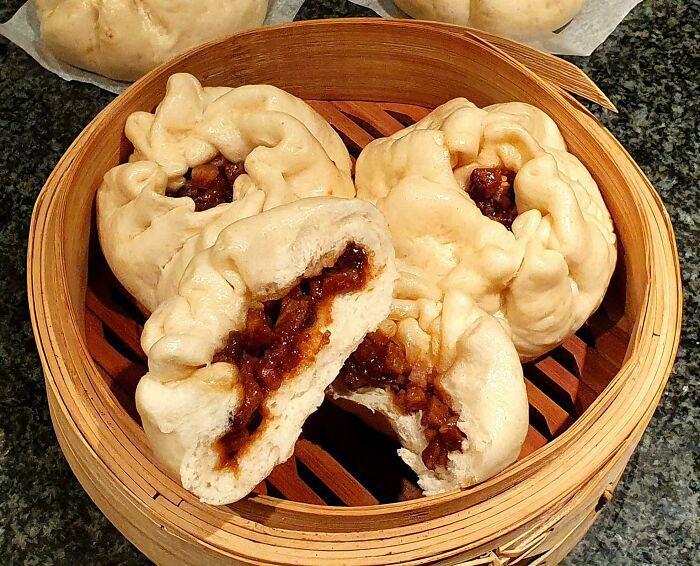
In Hong Kong, Chinese tea is called yum cha (drinking tea). Steamed versions of Char Siu Bao are dainty and tender and have a pure white shade, as opposed to baked versions, which possess a brilliant golden tinge and are often coated with a glossy glaze.
Cochinita pibil – Mexico
In Mexican cuisine, cochinita pibil is a type of pork dish with Yucatan origins. Garlic, bitter orange juice, plus annatto paste are used to marinate the pork. It is gently baked, shredded, and finally served alongside shallots, pickled onions, salsa, plus a variety of roasted veggies.
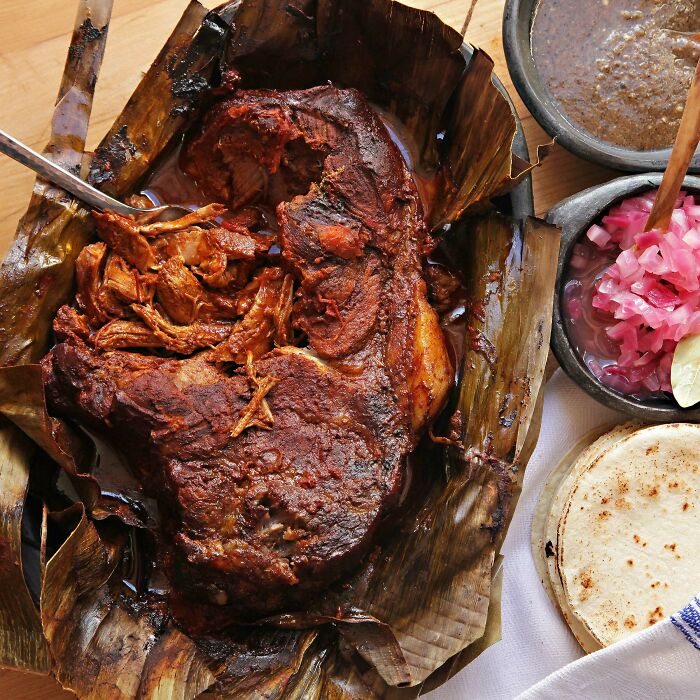
Cochinita pibil is distinguished by the meat’s red coloring, which is a result of the marinade’s annatto seeds. Prior to baking, the pig was traditionally enveloped in banana leaves. However, nowadays, foil or any other acceptable covering can be used instead of that.
Paidakia – Greece
Greek cuisine is known for its grilled lamb chops, which are typically served as a main dish and are appreciated across the nation. Before being grilled on classic coal barbecues, the lamb chops are typically marinated with different mixtures of lemon juice and olive oil.
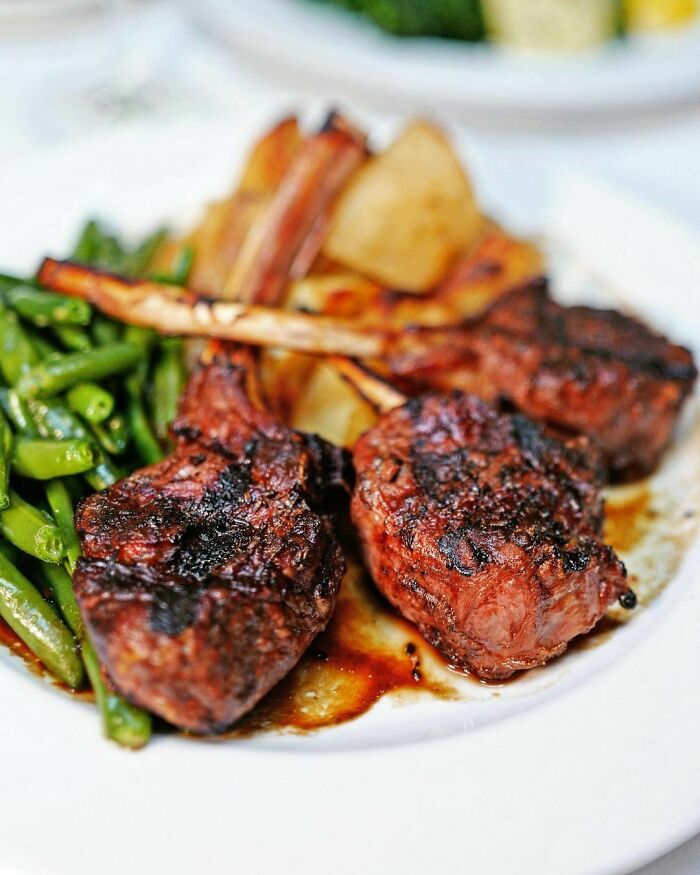
One shouldn’t forget to include fresh herbs. The chops frequently go with salads, potatoes, or the tangy and cool tzatziki sauce. Typically, patates tiganites—the Greek equivalent of French fries—are served with paidakia. Additionally, Greeks use their hands to eat paidakia, so when in Rome (Athens?)…
Shoyu Ramen – Japan
Shoyu ramen is a type of ramen with soy sauce broth named after the Japanese word for soy sauce. It’s one of the standard ramen varieties in the country and gets its moniker from the tare (seasoning) that provides the dish’s foundational flavor.
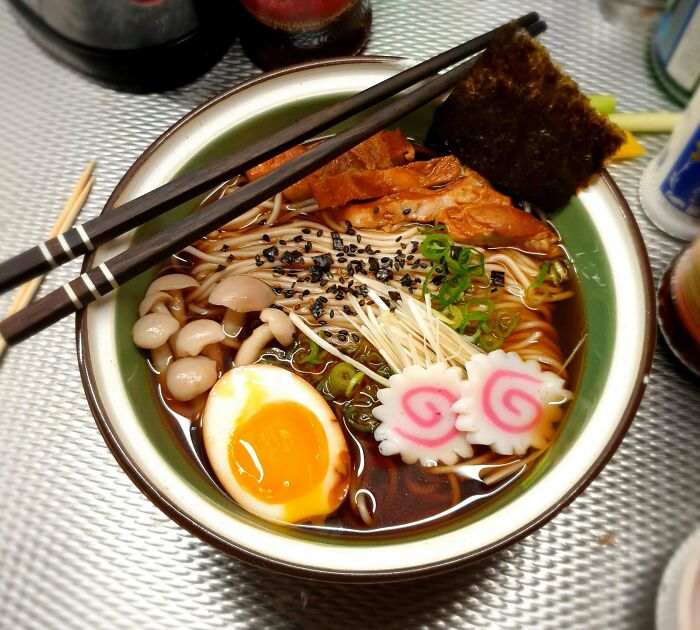
It also has a potent tangy flavor in addition to rich umami qualities. Sprint noodles plus a variety of toppings are two more features of Shoyu ramen. As with most other ramen dishes, the components required here are noodles, broth, and a variety of toppings.
Vindaloo – India
The flavorful vindaloo curry dish is quite popular in the Goa and Konkan regions of India as well as England. It can be prepared with paneer, beef, mutton, or chicken, but usually, marinated pork is what’s used to make it. The dish’s name is inspired by a Portuguese meal.
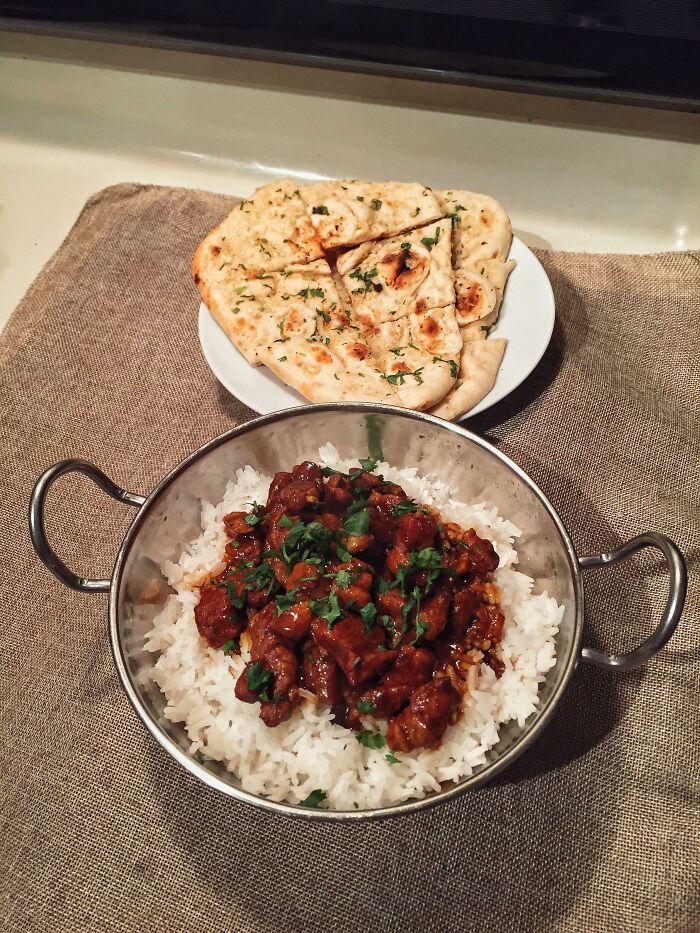
In Portuguese, it’s called “carne de vinha d’alhos,” which means “meat marinated in wine vinegar and garlic.” Somehow, that evolved to vindaloo. Portuguese explorers brought the dish to Goa in the 15th century, but it was modified to suit local preferences by substituting palm wine for wine vinegar.
Frango assado com piri piri – Portugal
The exact roots of the Portuguese dish “frango assado com piri piri,” commonly referred to as roasted chicken or frango assado, are unknown. Normally, the meal requires whole chicken breasts with butterflied flaps marinated in a concoction of olive oil, herbs, and smashed piri-piri peppers.
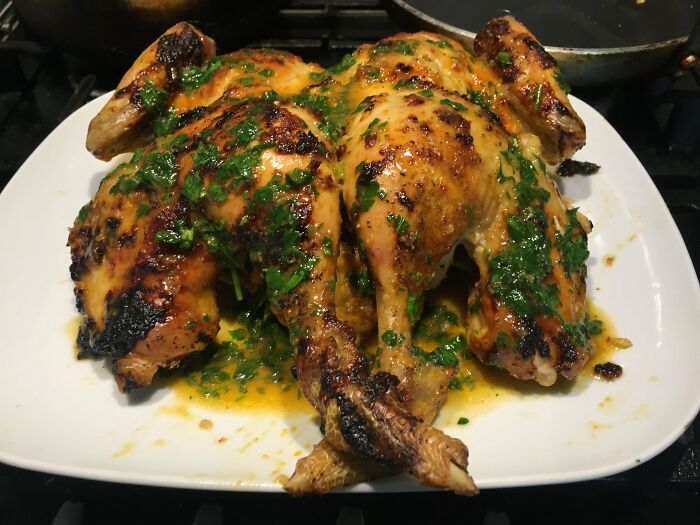
After being roasted or grilled, the chicken is topped with a piri-piri sauce, a mixture containing oil, dried or fresh chilies, and other optional ingredients. The dish resembles the African piri-piri (peri-peri) chicken quite a bit, which probably explains its origin.
Pozole – Mexico
Pozole is a typical soup from Mexico. It’s typically reserved for special occasions mainly because it takes a lot of time and energy to make. It is often associated with family and celebrations by people who grew up eating it. Pozole is derived from the Nahuatl term “pozilli,” which means “foam.”
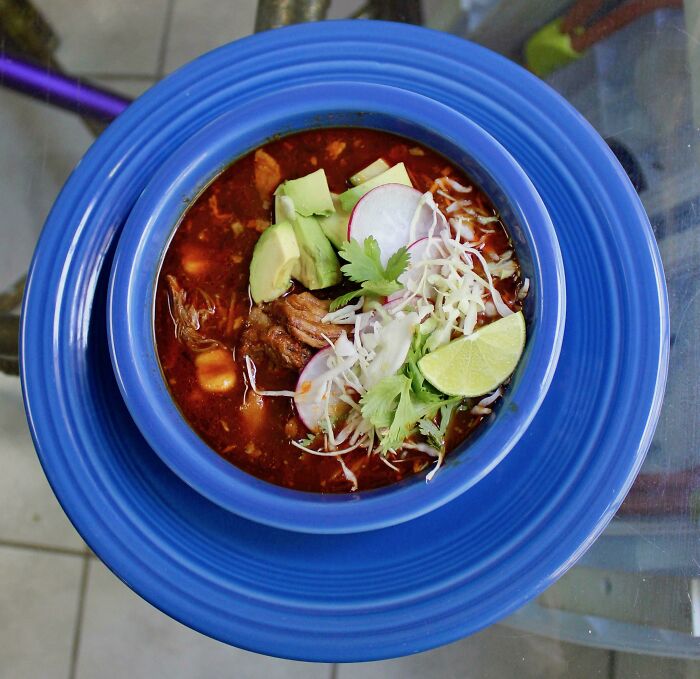
Hominy, which is refined maize without the germ, and meat, usually pork, is used to make pozole. The stew is flavored with several different spices, radishes, and avocados. Additionally, lime juice is frequently added as a garnish. The end result is something truly amazing.
Tteokbokki – Korea
The famous Korean meal called tteokbokki often contains fish cakes, a rich red chili sauce, as well as round rice cakes. Tteokbokki’s sauce is made by simmering dried anchovies, kelp, plus mushrooms in a broth. This snack will fill you up and has a chewy feel.
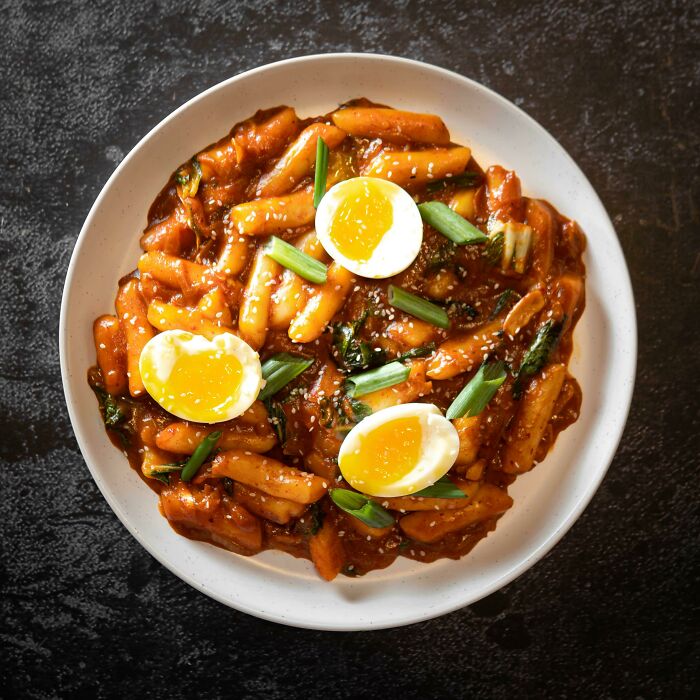
Tteokbokki is hands down one of the finest street dishes in Korea. If you’re obsessed with K-Dramas like us, you’ve probably seen it a lot. It’s frequently bought through pojangmacha or street vendors. The dish was developed around the Joseon Dynasty and was both a delicacy and considered therapeutic.
Khinkali – Georgia
These tasty Georgian dumplings, or khinkali, are recognized as one of the nation’s best culinary delights. Once they have been stuffed with meat and seasoning, they are typically twisted at the top. Typically, the meat used for khinkali is never prepared in advance to preserve the juices.
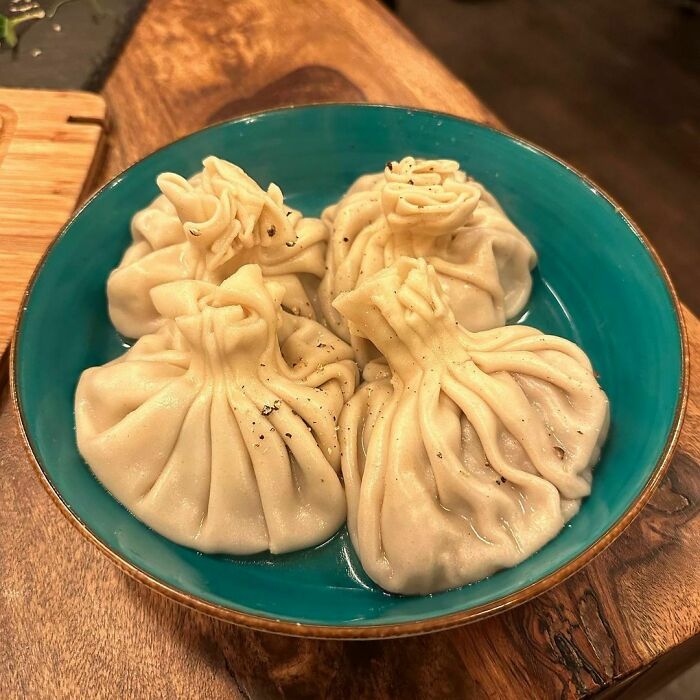
Each area in Georgia has a unique selection of fillings. For instance, while a combination of pork and beef is the most common stuffing across all of Georgia, lamb is the standard stuffing in the mountain regions. Modern recipes call for fresh herbs, including cilantro and parsley.
Pljeskavica – Serbia
This is the Serbian version of a hamburger. The pljeskavica is a flat, circular patty composed of ground beef, veal, pig, or a combination of the three. The word pljeskavica, which means tasty and juicy, comes from the verb pljeskati, which literally translates as “to clap.”

The ingredients used in making it include freshly diced onions and garlic and certain seasonings like paprika, salt, as well as pepper. The patties are shaped with a clapping action before being cooked to a smokey brown hue using typical grill lines on both sides.
Ceviche mixto – Peru
Ceviche Mixto is a typical appetizer from Peru. This delectable dish is made using additional seafood ingredients alongside the typical fish. This could be octopuses, clams, scallops, shrimp, or squid. The meal occasionally contains a few mussels or even tiny crabs.
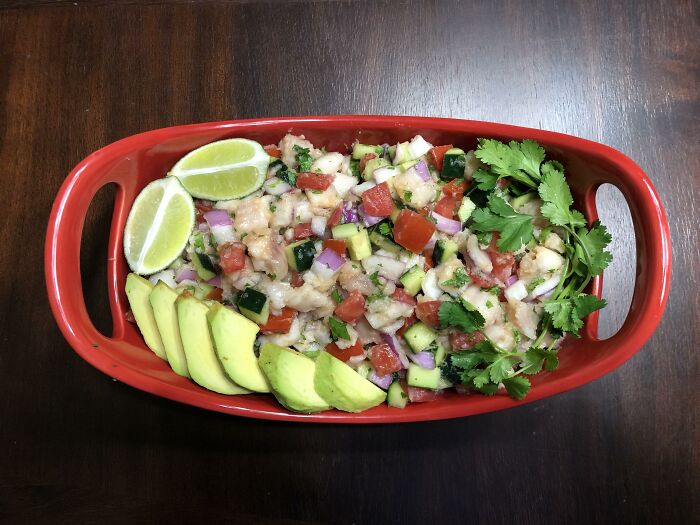
The shellfish is marinated in salt, onions, cilantro, hot chilies, lime juice, celery juice, plus lemon juice. Ceviche mixto frequently comes with sweet potatoes with glaze and Peruvian corn. Both the dish itself and the process of preparation are referred to as ceviche.
Cevapi – Bosnia and Herzegovina
Cevapi is a common street snack in the regions where it’s considered traditional. The ground or minced beef used to make these little, hand-rolled meat mince sausages is frequently mixed with pork, veal, or lamb. Garlic, salt, and black pepper are frequently added to flavor the meats.
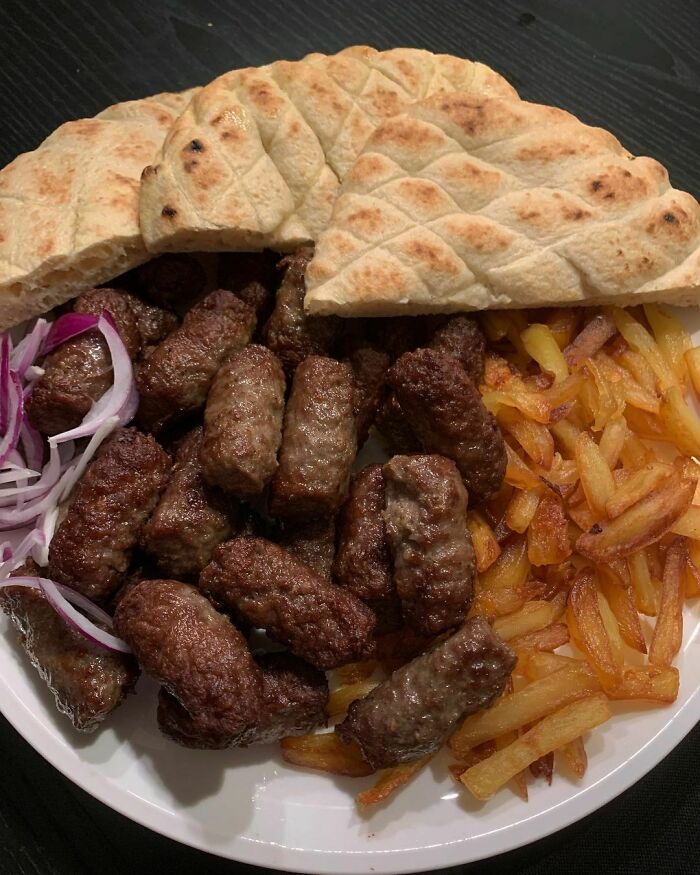
Although it’s not standard, paprika or hot red pepper flakes are also sometimes used. It often comes wrapped in flatbread (known as Lepinja in Serbia or Somun in Bosnia), coupled with a delectable Ajvar, an eggplant and bell pepper relish, plus sliced onions.
Kotlet Schabowy – Poland
Kotlet Schabowy is among the most well-known Polish specialties. It’s often claimed that this crusted pork cutlet is a riff on the increasingly well-known Wiener schnitzel. It was influenced by German as well as Austrian culinary customs when it was first made in the 19th century.
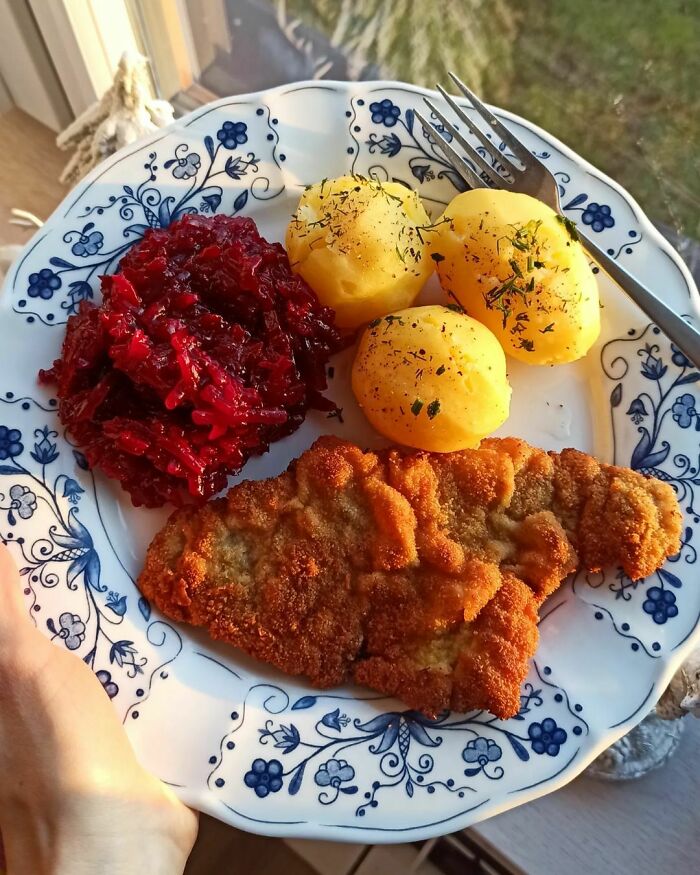
The dish quickly became a standard in homes and cafés all throughout the country. After being thinly breaded and fried in lard, a pig chop or tenderloin is usually accompanied by sauerkraut, boiled potatoes, and various fresh and pickled salads. The Poles certainly knew what they were doing with this one!
Sisig – Philippines
This popular Filipino dish is created from the ears, cheeks, and jowls of a pig. These are boiled, chopped, and grilled before being marinated using salt, pepper, and vinegar. The meat is then mixed with crispy fried onions, chili peppers, as well as chicken livers.
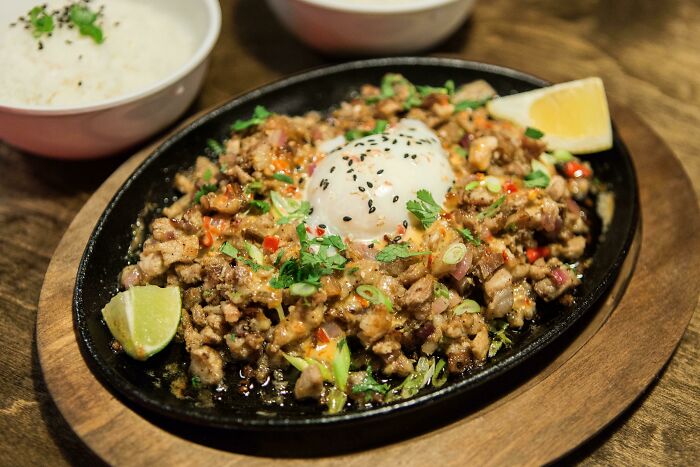
A raw egg is typically placed on top of the dish. It is thought that the phrase sisigan, which means to make sour, is where the dish’s name originates. Since its sour taste was thought to be a vomit suppressor, it was used to treat nausea and hangovers.
Kaeng khiao wan – Thailand
In traditional Thai cooking, this intense green curry is known as Kaeng khiao wan. Despite the fact that the term refers to “sweet green curry,” it merely indicates the shade of “sweet green.” Thai green curry is usually made with green chilies.
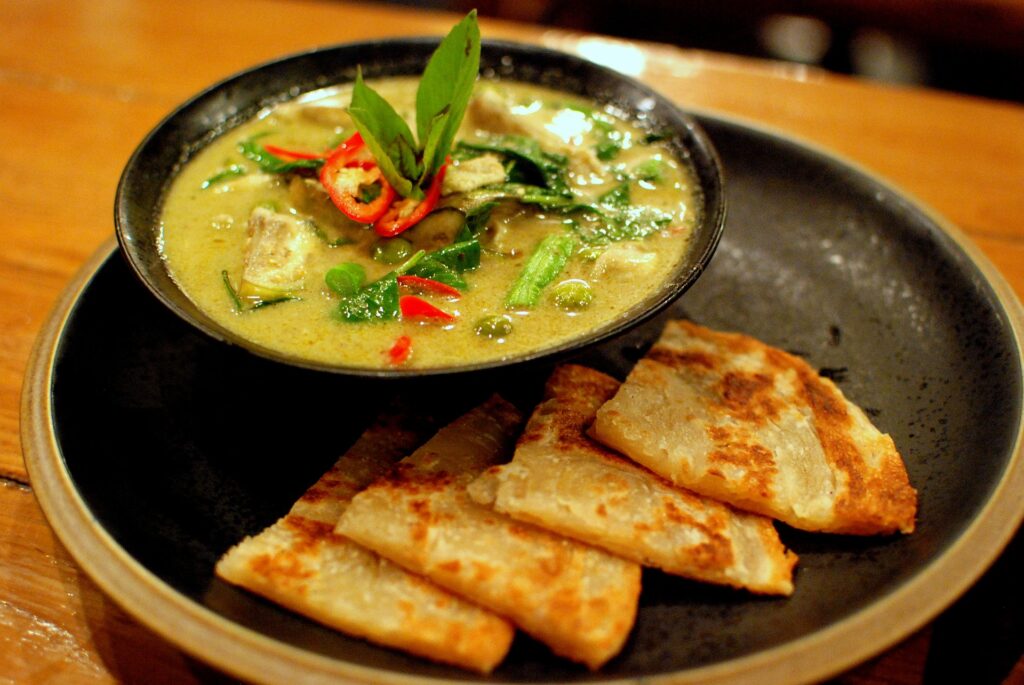
Fresh chilies are ground into a paste together with garlic, shrimp paste, lemongrass, turmeric, coriander, kaffir leaves, galangal, plus whole peppercorns. The paste is what gives the dish its distinctive flavor and color. This is certainly a must-try whenever you’re in Thailand.
Moqueca – Brazil
Fish or shrimp (or both) are blended using a foundation of palm oil, coconut milk, or olive oil to make the seafood stew known as moqueca. This dish is typically served with rice and is simmered in old-fashioned clay pots using fresh herbs and veggies.
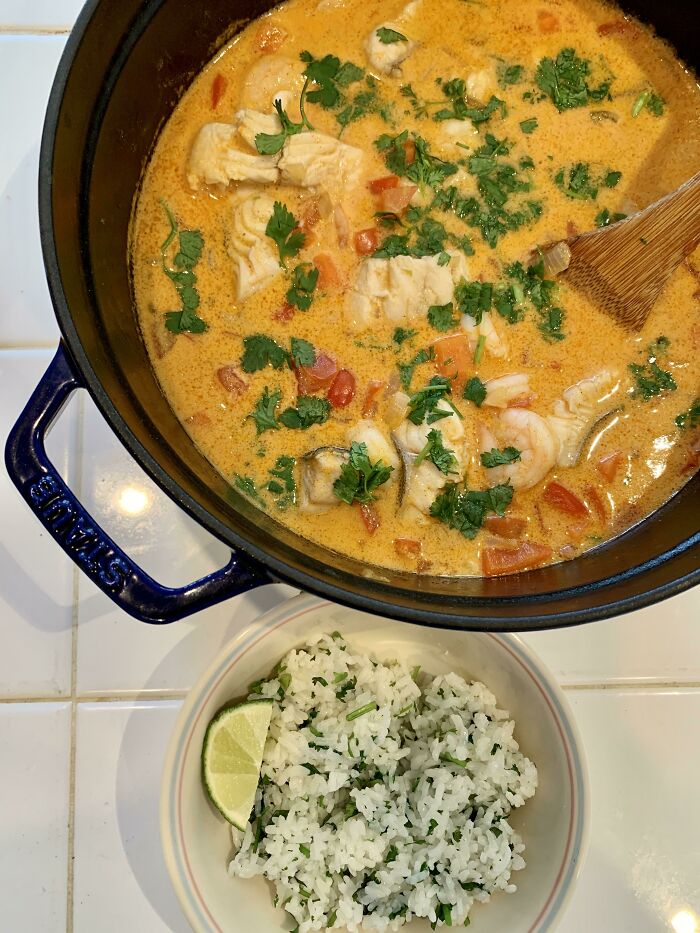
There are various types of moqueca, including moqueca Capixaba and moqueca Baiana from the northeastern state of Bahia. The dish is typically topped with freshly cut cilantro, and its perfect side dish is crusty bread. The crunchy texture of the bread goes really well with the stew!
Pernil – Puerto Rico
Among Puerto Rico’s most widely recognized food is Pernil. This is a juicy roast pork shoulder that is customarily flavored with adobo mojado, a marinade made of vinegar, garlic, paprika, and salt, with oregano. The name ‘pernil’ originates from the Spanish term pierna, which means leg.
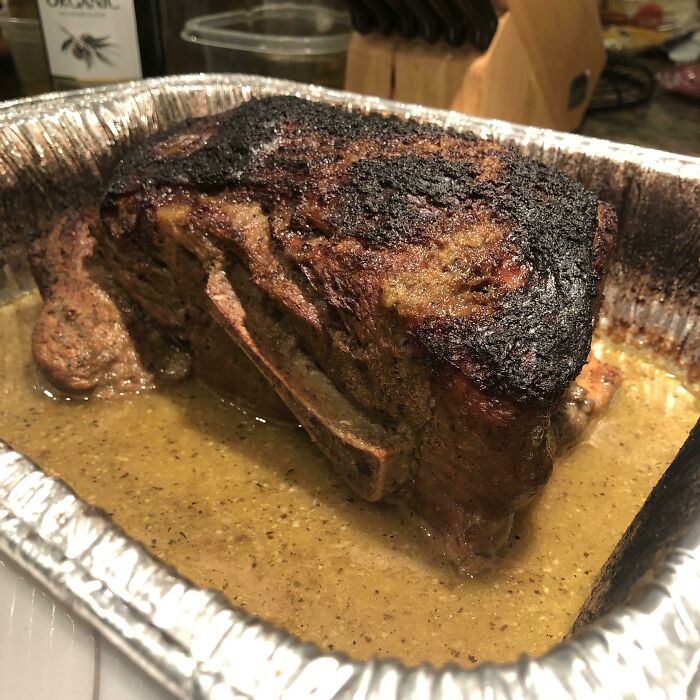
However, it also happens to be a Catalan term that means ham, alluding to the classic recipe which requires fresh ham. The pork shoulder has evolved into a crucial component of pernil since it is more readily accessible and less expensive than ham.
Milanesa Napolitana – Argentina
The classic Argentine meal Milanesa Napolitanatraces traces its roots in Buenos Aires. It’s made up of a fried milanesa steak that has been breaded and covered with tangy tomato sauce, a slice of ham, and thick mozzarella slices meant to melt under the broiler.
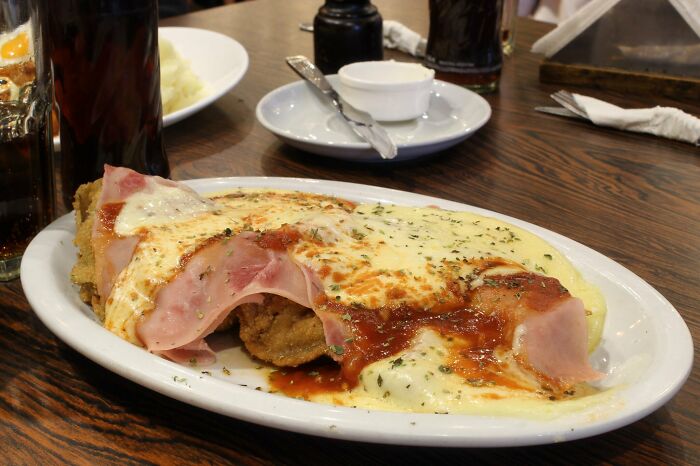
Usually, it comes with a side of french fries. The leftovers can be used in making sánguche de milanesa, which are mouthwatering sandwiches. The name of this dish comes from an establishment called Nápoli, where the dish is said to have been created in the 1930s or 1940s.
Pečená Kachna- Czech Republic
Roasted duck is referred to as pečená kachna within the Czech Republic. Typically, caraway seeds, as well as marjoram, are used to season the duck before it is slow-roasted in a preheated oven until crispy and golden. Occasionally, duck fat and roux sauce is served with it.
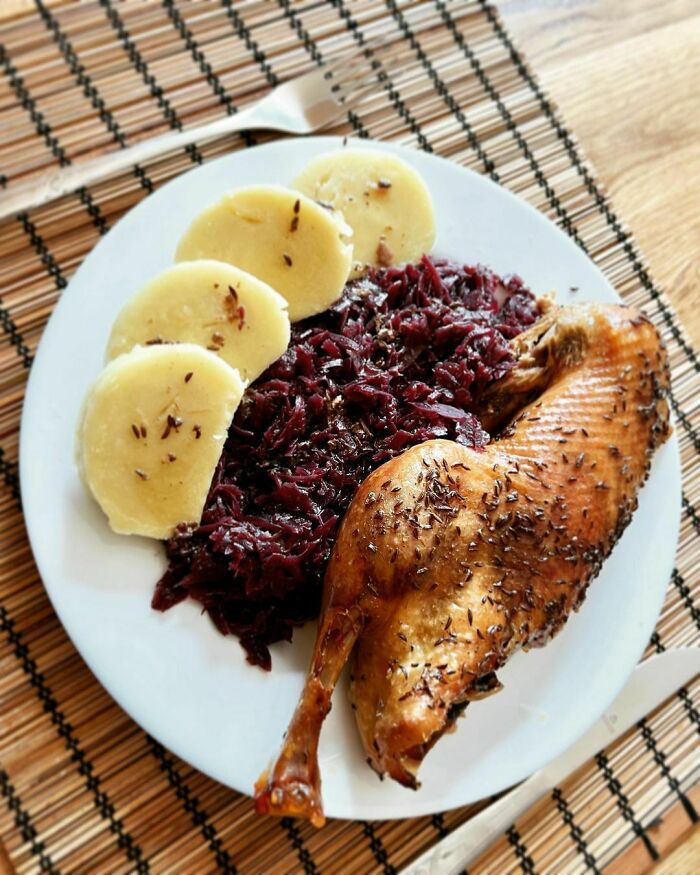
Typical sides also include bread dumplings, potatoes, and braised red cabbage. The homemade variations of this filling Czech staple are typically cooked as a weekend supper or as a main course eaten on special occasions. This dish frequently appears on the meal plans of traditional restaurants.
Svíčková – Czech Republic
Among the most well-known dishes in Czech cuisine is this delectable beef dish. It is prepared with braised beef that has been marinated (typically tenderloin) and is usually accompanied by a velvety vegetable sauce. The sauce contains celeriac, carrots, and parsley root.
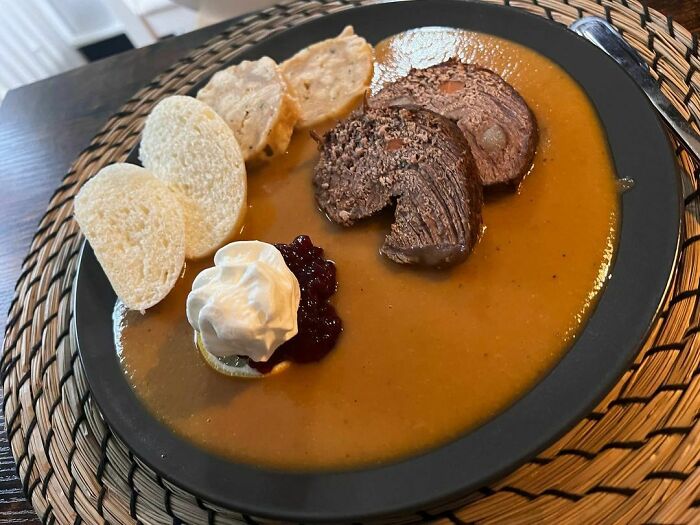
Thyme, bay leaves, and allspice are frequently used to season the dish. The creamy gravy, which is made with sour cream and puréed or mashed root vegetables, is what makes this meal distinctive from others. Additionally, Bavarian cuisine and conventional French culinary methods have a big effect on it.
Sheftalia – Cyprus
A blend of minced pork and lamb, red onion, and parsley is wrapped in caul fat (a fine fatty film that surrounds the stomachs of cows, sheep, and pigs) to make this classic Cypriot sausage. Salt, pepper, and cinnamon are also added to the meat mixture.
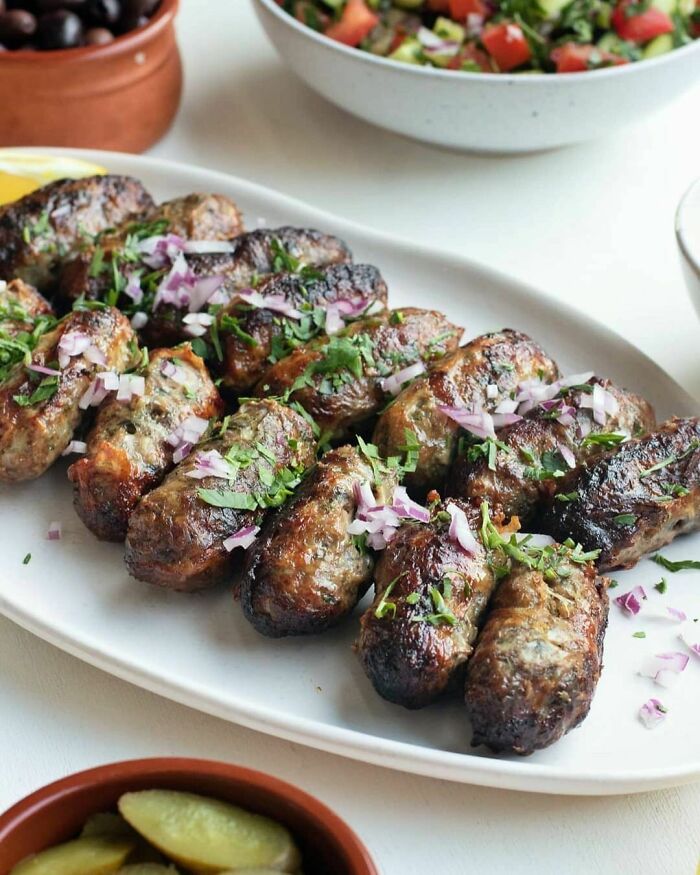
The last three spices are added before the mix is shaped into little sausages. Then they are roasted over a skewer. The caul fat dissolves as the meat cooks, providing the sausages a crisp, browned outside while preserving the meat’s tenderness and juiciness inside.
